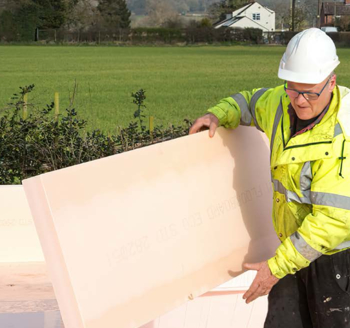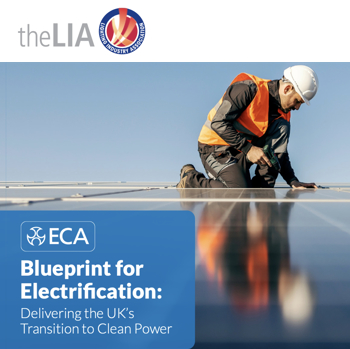Main author
Multiple Author ArticleBREEAM Responsible Sourcing of Materials
Contents |
[edit] Aim and benefits
To recognise and encourage the specification and procurement of responsibly sourced materials for key building elements.
[edit] Value to Client
This is a great marketing tool for the client, a very apparent and easy method to demonstrate green credentials.
It can also help the client’s brand management, to avoid scandals, as credible and comparable schemes to evaluate the responsibly sourced products are used. Responsible sourcing of materials takes into consideration risks to the environment, socio-ecomic impact of any product or material specified. The client can be assured that the building being created does not have a negative impact elsewhere or is harming the planet, which is a long term benefit. ‘Green’ material information is widely available now, and the client can reuse a developed portfolio of these responsibly-sourced materials as a palette for future projects
[edit] When to consider
The requirement to responsibly source materials where practicable can be written into the tender documents and the design team should be encouraged to specify manufacturers that operate environmental management systems.
Once the design has been fixed, a breakdown of the materials within each element can be prepared along with details of any specified manufacturers/suppliers and their EMS/COC certification. By inputting the information within the calculator tool at an early stage based on the known specified products, it is possible to see which materials will therefore need to be responsibly sourced to gain the targeted credits or advise if alternative products should be specified with higher levels of responsible sourcing. The contractor will then be able to include any responsible sourcing requirements within their subcontract and purchase orders.
[edit] Step by step guidance
There are two routes to demonstrating compliance. Either of the routes can be used or a combination may be followed:
- Route 1 is intended for use in the majority of situations where detailed information on quantities is not available.
- Route 2 is for situations where a more detailed analysis is possible due to the availability of detailed information on material quantities
- Route 3 (a combination of routes 1 and 2) is intended for situations where details on materials quantities is only available for some of the materials.
to be completed......
[edit] Questions to ask while seeking compliance
Awaiting content
[edit] Tools and resources
https://kb.breeam.com/section/new-construction/uk/2014-uk/materials-breeam_uk_nc_2014/mat03/
[edit] Tips and best practice
'Building services’ refers to the equipment and distribution systems specified for providing heating, power, ventilation, lighting, air-conditioning and domestic water services in a building. As a minimum, this location/use category should include the equipment and controls specified for the building services.
Please refer to GN24 for guidance on assessing building services.
[edit] Typical evidence
[edit] Design Stage
- Drawings/specification and/or schedule confirming the construction of each element and either information on the actual responsible sourcing certification or confirmation of the aspired responsible sourcing level where products are yet to be specified.
- Mat03 calculator tool.
- Copies of any EMS/COC certification should be provided.
- Where the constructions are not yet defined, i.e. very early design stages, then a letter of intent or contract clause should be used to set out the % of RSM points the contractor is required to achieve.
[edit] Post Construction Stage
- As built drawings/specification and/or schedule confirming the construction of each element, the product specified, manufacturer/supplier and any EMS/COC.
- Mat03 calculator tool.
- Copies of any EMS/COC certification should be provided.
- Proof of purchase in the form of purchase orders/delivery tickets or invoices.
<Jane Morning>
[edit] Applicable Schemes
The guidelines collated in this ISD aim to support sustainable best practice in the topic described. This issue may apply in multiple BREEAM schemes covering different stages in the life of a building, different building types and different year versions. Some content may be generic but scheme nuances should also be taken into account. Refer to the comments below and related articles to this one to understand these nuances. See this document for further guidelines.
- UK New Construction 2014
BRE Global does not endorse any of the content posted and use of the content will not guarantee the meeting of certification criteria.
--Multiple Author Article 22:07, 21 Apr 2018 (BST)
[edit] Related articles on Designing Buildings Wiki
- A traceability framework for the construction supply chain.
- Action programme for responsible and ethical sourcing.
- BES 6001 Responsible sourcing of construction products.
- BREEAM.
- BREEAM Life cycle impacts (ac)
- BREEAM Material efficiency (ac)
- BREEAM recognised responsible sourcing certification schemes.
- BREEAM Responsible Sourcing of Materials.
- Broken chain.
- Building Back Better: Circularity and BREEAM.
- Comprehensive route.
- Delivering sustainable buildings: Savings and payback FB 63.
- Green Seal.
- Material procurement.
- Point of supply.
- Product manufacturers must regain confidence.
- Reused construction products.
- Responsible sourcing of construction products.
- Sustainable materials.
Featured articles and news
The UK's Modern Industrial Strategy: A 10 year plan
Previous consultation criticism, current key elements and general support with some persisting reservations.
Building Safety Regulator reforms
New roles, new staff and a new fast track service pave the way for a single construction regulator.
Cooling centres and cool spaces
Managing extreme heat in cities by directing the public to places for heat stress relief and water sources.
Winter gardens: A brief history and warm variations
Extending the season with glass in different forms and terms.
Restoring Great Yarmouth's Winter Gardens
Transforming one of the least sustainable constructions imaginable.
Construction Skills Mission Board launch sector drive
Newly formed government and industry collaboration set strategy for recruiting an additional 100,000 construction workers a year.
New Architects Code comes into effect in September 2025
ARB Architects Code of Conduct and Practice available with ongoing consultation regarding guidance.
Welsh Skills Body (Medr) launches ambitious plan
The new skills body brings together funding and regulation of tertiary education and research for the devolved nation.
Paul Gandy FCIOB announced as next CIOB President
Former Tilbury Douglas CEO takes helm.
UK Infrastructure: A 10 Year Strategy. In brief with reactions
With the National Infrastructure and Service Transformation Authority (NISTA).
Ebenezer Howard: inventor of the garden city. Book review.
The Grenfell Tower fire, eight years on
A time to pause and reflect as Dubai tower block fire reported just before anniversary.
Airtightness Topic Guide BSRIA TG 27/2025
Explaining the basics of airtightness, what it is, why it's important, when it's required and how it's carried out.
Construction contract awards hit lowest point of 2025
Plummeting for second consecutive month, intensifying concerns for housing and infrastructure goals.
Understanding Mental Health in the Built Environment 2025
Examining the state of mental health in construction, shedding light on levels of stress, anxiety and depression.
The benefits of engaging with insulation manufacturers
When considering ground floor constructions.
Lighting Industry endorses Blueprint for Electrification
The Lighting Industry Association fully supports the ECA Blueprint as a timely, urgent call to action.
























Comments